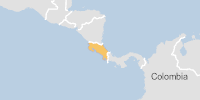RSS feed source: Global Disaster Alert and Coordination Systems (GDACS).
WASHINGTON, D.C.—The Federal Emergency Management Agency (FEMA) categorically refutes the misleading claims made in a recent New York Times article regarding disaster relief funding and recovery efforts. Reports like the one in the New York Times, deliberately misrepresent how the disaster relief fund operates and creates unnecessary uncertainty around the health of FEMA’s funding sources including the Disaster Relief Fund (DRF) during a time like hurricane season.
The American people deserve clarity and truth about the resources available to them during times of crisis. The truth is: Disaster relief funds do not expire. FEMA’s DRF is supported through annual appropriations and supplemental appropriations when necessary. These funds are carried forward across fiscal years, ensuring flexibility to address both immediate and long-term disaster recovery needs. No funds are held back, canceled or made unavailable; rather, they are seamlessly integrated into the next fiscal year’s funding codes to ensure continuity of operations.
Currently, FEMA’s DRF maintains a regular balance, carried over from Fiscal Year 2025 to 2026. This is basic financial management for no-year appropriations. DHS and FEMA work every day to ensure the stability and solvency of the DRF, even as FEMA continues to address outstanding disaster recovery payments related to COVID-19—the largest disaster in FEMA’s history—and other ongoing recovery efforts. While there are more than $11 billion in outstanding disaster recovery payments for COVID-19 and
Click this link to continue reading the article on the source website.


